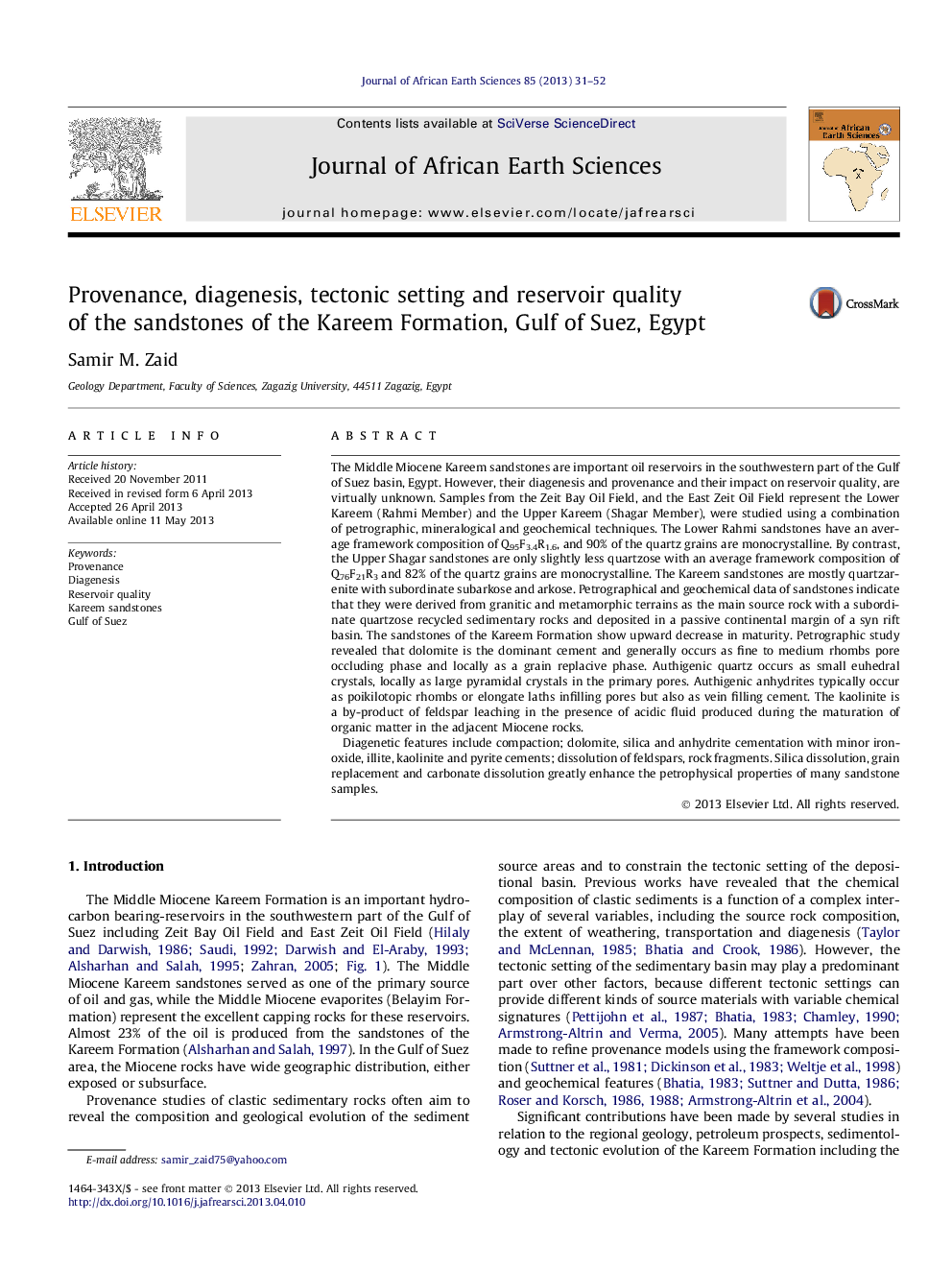| کد مقاله | کد نشریه | سال انتشار | مقاله انگلیسی | نسخه تمام متن |
|---|---|---|---|---|
| 4728944 | 1640221 | 2013 | 22 صفحه PDF | دانلود رایگان |
• The study deals with provenance and reservoir quality of Kareem sandstones.
• The source material was deposited in a passive continental margin of a synrift basin.
• Also, the deposition of Upper Kareem constrained the beginning of faulting.
• They were derived from mixed granitic, metamorphic and recycled sedimentary rocks.
• Enhancement of reservoir quality is followed of dissolution of carbonate cement.
The Middle Miocene Kareem sandstones are important oil reservoirs in the southwestern part of the Gulf of Suez basin, Egypt. However, their diagenesis and provenance and their impact on reservoir quality, are virtually unknown. Samples from the Zeit Bay Oil Field, and the East Zeit Oil Field represent the Lower Kareem (Rahmi Member) and the Upper Kareem (Shagar Member), were studied using a combination of petrographic, mineralogical and geochemical techniques. The Lower Rahmi sandstones have an average framework composition of Q95F3.4R1.6, and 90% of the quartz grains are monocrystalline. By contrast, the Upper Shagar sandstones are only slightly less quartzose with an average framework composition of Q76F21R3 and 82% of the quartz grains are monocrystalline. The Kareem sandstones are mostly quartzarenite with subordinate subarkose and arkose. Petrographical and geochemical data of sandstones indicate that they were derived from granitic and metamorphic terrains as the main source rock with a subordinate quartzose recycled sedimentary rocks and deposited in a passive continental margin of a syn rift basin. The sandstones of the Kareem Formation show upward decrease in maturity. Petrographic study revealed that dolomite is the dominant cement and generally occurs as fine to medium rhombs pore occluding phase and locally as a grain replacive phase. Authigenic quartz occurs as small euhedral crystals, locally as large pyramidal crystals in the primary pores. Authigenic anhydrites typically occur as poikilotopic rhombs or elongate laths infilling pores but also as vein filling cement. The kaolinite is a by-product of feldspar leaching in the presence of acidic fluid produced during the maturation of organic matter in the adjacent Miocene rocks.Diagenetic features include compaction; dolomite, silica and anhydrite cementation with minor iron-oxide, illite, kaolinite and pyrite cements; dissolution of feldspars, rock fragments. Silica dissolution, grain replacement and carbonate dissolution greatly enhance the petrophysical properties of many sandstone samples.
Journal: Journal of African Earth Sciences - Volume 85, September 2013, Pages 31–52
